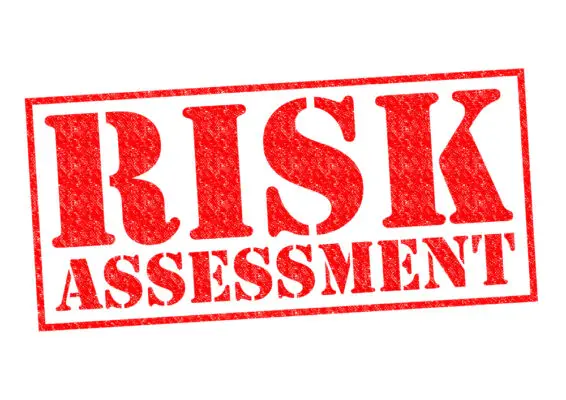Risk management is essential to internal audit, ensuring organizations effectively identify and address potential risks. One key aspect of risk management is the process of risk assessment, which involves evaluating the likelihood and impact of various risks on an organization’s objectives.
To conduct a comprehensive risk assessment, internal auditors often utilize questionnaires to gather relevant information from stakeholders.
This article explores the significance of risk assessment in internal control and provides insights into using an internal audit risk assessment questionnaire. It will discuss the purpose and benefits of conducting a risk assessment and provide a template for creating an effective questionnaire.
Using this template, auditors can obtain valuable insights into an organization’s risk landscape, allowing them to prioritize their efforts and develop appropriate mitigation strategies.
Understanding the importance of risk assessment in internal audit is crucial for organizations seeking to manage risks and ensure business continuity proactively.
Through a systematic approach that gathers relevant information via questionnaires, internal auditors can identify potential vulnerabilities and make informed recommendations to enhance controls and mitigate risks effectively.

What is Risk Management in the Internal Audit?
Risk management in the internal audit is a systematic process that aims to identify, assess, and mitigate potential risks an organization faces to ensure the achievement of its objectives.
It involves evaluating the effectiveness of internal controls and assessing an organization’s risk profile through various methods, such as compliance audits and comprehensive risk assessment questionnaires.
Internal auditors play a crucial role in this process by providing their perspectives on risk assessment based on their knowledge and understanding of the organization’s operations.
The annual internal audit risk assessment allows for a comprehensive review of the current risk status and identifies areas where improvements are needed.
Implementing effective risk management practices, organizations can proactively address potential risks and ensure the safeguarding of assets, compliance with regulations, and attainment of strategic goals.
What is a Risk Assessment in Internal Control?
Evaluation is a crucial process in internal control, enabling organizations to identify potential vulnerabilities and establish effective measures to mitigate them.
A risk assessment in internal control helps organizations assess the risk level and develop appropriate risk management strategies.
Organizations can use various tools, such as audit risk assessment templates or an initial risk assessment questionnaire, to conduct a comprehensive risk assessment.
These tools help gather information about potential risks, evaluate their likelihood and impact, and prioritize them based on the level of risk they pose.
Through this process, organizations can better understand their internal risks and make informed decisions about allocating resources for mitigation efforts.
Incorporating knowledge of risk into the internal audit plan template ensures that potential risks are adequately addressed during the audit planning process.
Sample Questions When Performing a Risk Assessment
This will focus on the key points of leadership, risk assessment, standards and controls, training and communication, monitoring, auditing, and response in the context of risk assessment.
Leadership plays a crucial role in setting the tone for an effective risk assessment process by ensuring that adequate resources are allocated and that there is clear accountability for managing risks.
Risk assessment involves identifying and analyzing potential risks to determine their likelihood and impact on organizational objectives.
Standards and controls provide a framework for assessing risks against established criteria to ensure compliance with legal and regulatory requirements.
Training and communication are essential for ensuring employees understand their roles and responsibilities in managing risks effectively.
Monitoring involves ongoing evaluation of risk management processes to identify any gaps or weaknesses that may require corrective action.
Auditing provides independent assurance of the effectiveness of internal controls and risk management practices.
Finally, response refers to the actions taken to address identified risks, including implementing controls or transferring risks through insurance or other means.
Leadership
Leadership plays a crucial role in the overall effectiveness and efficiency of an organization’s internal audit function. Effective leaders provide guidance, set a clear vision, and foster a culture of accountability within the internal audit team.
They ensure that the internal audit risk assessment questionnaire is properly designed and implemented to identify and prioritize key risks facing the organization.
To illustrate the importance of leadership in risk assessment, consider the following table:
| Leadership RolesDescriptionImpact on Risk Assessment | ||
|---|---|---|
| Setting objectives and goals | Leaders establish clear objectives for the internal audit function, ensuring alignment with organizational goals. | This helps focus risk assessment efforts on areas critical to achieving those goals. |
| Resource allocation | Leaders allocate sufficient resources to conduct thorough risk assessments. | Sufficient resources enable comprehensive identification and evaluation of risks across all areas of the organization. |
| Monitoring progress | Leaders monitor the progress of risk assessments, ensuring timely completion and addressing any obstacles or issues encountered. | Regular monitoring ensures that risk assessments are conducted effectively and results are used for decision-making |
Effective leadership is essential for a successful internal audit risk assessment process as it sets the tone for identifying and managing key organizational risks.
Risk Assessment
Risk assessment is a critical process that enables organizations to proactively identify and evaluate potential risks that may impact their operations. It involves analyzing various risk factors and determining their probability and potential impact.
By conducting a thorough risk assessment, organizations can understand their risk status accurately and develop strategies to mitigate or manage these risks effectively.
Organizations often use business risk assessment templates or sample internal audit risk assessment templates to facilitate the risk assessment process. These tools provide a structured framework for identifying and evaluating different types of risks, such as compliance risks or internal control weaknesses.
They typically include a set of internal audit questions and internal control questions that help assess the effectiveness of existing controls and identify areas for improvement.
Risk assessment supports informed decision-making by providing management with valuable insights into potential risks and their implications. This information can then be used to develop a resources strategic internal audit plan and inform the organization’s overall risk management efforts.
Standards and Controls
Standards and controls play a significant role in mitigating risks and ensuring effective governance within an organization. They provide a framework to guide decision-making processes, set risk appetites, and define compliance program expectations.
Additionally, standards and controls facilitate the developing of a control program that includes implementing safeguards, monitoring activities, and reporting on deficiencies or weaknesses.
Major program modifications should be assessed against established standards to ensure they align with organizational objectives and comply with regulatory requirements.
Furthermore, through an internal audit risk assessment questionnaire, organizations can evaluate their current operating procedures against established standards and identify areas for improvement or potential risks.
This enables them to promptly address any gaps in control measures while meeting business stakeholders’ expectations for robust risk management practices.
Training and Communication
Training and communication are crucial in effectively implementing organizational standards and controls. Proper training gives employees the necessary knowledge and skills to understand and adhere to established standards.
It allows them to identify potential risks, apply appropriate controls, and respond effectively to any deviations from established procedures.
On the other hand, communication facilitates the dissemination of information regarding standards and controls throughout the organization. It ensures that all relevant parties know their responsibilities and obligations to comply with these requirements.
Regular communication channels enable individuals to seek clarification or report any concerns related to standards and controls.
Additionally, ongoing training programs help organizations stay up-to-date with new regulations or best practices, ensuring continuous improvement in risk management practices.
Therefore, effective training and communication are essential to fostering an organization’s compliance culture.
Monitoring, Auditing, and Response
Monitoring, auditing, and response are critical components in ensuring the effectiveness of standards and controls within an organization, serving as a safeguard against potential vulnerabilities and promoting accountability throughout the operational processes.
In the context of an internal audit risk assessment questionnaire, monitoring refers to the ongoing surveillance of activities to identify any deviations from established procedures or policies.
Auditing involves systematically examining and evaluating these activities to determine whether they comply with relevant regulations and guidelines.
Response entails taking appropriate actions based on the findings of monitoring and auditing processes.
The questionnaire should include open-ended questions to gather detailed information about risks and control measures and actual questions related to specific organisational areas or functions.
Advanced question types, such as interactive or matrix-type questions, can be incorporated to gather more comprehensive data for analysis.
By incorporating monitoring, auditing, and response mechanisms into an internal audit risk assessment questionnaire, organizations can proactively identify potential risks and implement necessary controls to mitigate them effectively.

Internal Audit Risk Assessment Questionnaire Template
Utilizing an internal audit risk assessment questionnaire template allows for systematically evaluating potential risks within an organization, fostering a comprehensive understanding of vulnerabilities, and facilitating strategic decision-making.
The template typically includes various fields of risk that need to be assessed, such as financial, operational, and compliance risks. It may also provide a checklist of sample questions or interview questions to guide auditors in their assessments.
The questionnaire is designed to cover a series of questions that can help identify areas where risks are present and assess their magnitude. Additionally, it enables omnidirectional employee assessments by soliciting input from various organizational stakeholders.
The validation process compares the responses obtained with established organizational procedures and guidelines. Overall, the internal audit risk assessment questionnaire template is valuable for organizations seeking to manage and mitigate potential risks proactively.
Why is Risk Assessment Important?
Risk assessment is crucial in identifying and evaluating potential threats and vulnerabilities to an organization, facilitating informed decision-making and proactive risk management. Organizations need to implement wellness programs or health programs for their employees.
Conducting a risk assessment, organizations can anticipate any potential risks associated with these programs, such as employee dissatisfaction or breaches of confidentiality.
Risk assessment also helps identify areas where company policies may need to be strengthened or revised to mitigate risks effectively. Additionally, risk assessments can ensure that the company profile aligns with the goals and objectives of the wellness program.
Furthermore, larger organizations can efficiently gather information from employees using contact or single-page forms during the risk assessment process. The questions asked in these assessments should encourage honest responses from employees to obtain accurate insights into potential risks faced by the organization.
Frequently Asked Questions
What are the common challenges internal auditors face during the risk assessment process?
Common challenges internal auditors face during the risk assessment process include obtaining reliable data, identifying and assessing risks accurately, managing time constraints, ensuring independence and objectivity, and effectively communicating findings to stakeholders.
How does risk assessment help in identifying potential areas of fraud or non-compliance?
Risk assessment helps identify potential fraud or non-compliance areas by systematically analyzing and evaluating the organization’s internal controls, processes, and procedures.
It allows auditors to identify weaknesses and vulnerabilities that could be exploited for fraudulent activities or non-compliant behavior.
What are the different methods or techniques used for conducting a risk assessment in internal control?
Different methods or techniques for conducting a risk assessment in internal control include interviews, document reviews, process walkthroughs, data analysis, and benchmarking. These approaches help identify potential risks and evaluate the effectiveness of existing controls.
Are there any specific regulations or standards that internal auditors should consider during the risk assessment process?
During the risk assessment, internal auditors should consider specific regulations or standards, such as the COSO Internal Control Framework and the ISO 31000 Risk Management Standard, to ensure compliance and best practices in evaluating and managing risks.
How often should risk assessments be performed by internal auditors to ensure effectiveness?
Risk assessments should be performed regularly by internal auditors to ensure effectiveness. The frequency of these assessments may vary depending on the organization’s size, industry, and risk profile, but common practice is to conduct them annually or as significant changes occur.

Conclusion
Risk management in internal audit is crucial to ensuring the effectiveness and efficiency of an organization’s operations. A risk assessment in internal control involves identifying, analyzing, and evaluating potential risks and their impact on achieving objectives.
Using a comprehensive questionnaire, auditors can gather relevant information to determine the level of risk associated with specific processes or areas within an organization. This helps prioritize audit activities and develop appropriate strategies to mitigate identified risks.
Regular risk assessments are essential for organizations to make informed decisions and maintain sound governance practices.
Risk assessment is vital in internal audits by providing valuable insights into potential risks that may hinder organizational success. By using a structured questionnaire, auditors can thoroughly evaluate various aspects of an organization’s operations and identify areas that require attention.
This analytical approach allows organizations to proactively address potential threats and implement effective controls to manage risks effectively.
Implementing robust risk assessment practices empowers organizations to safeguard their assets, enhance operational efficiency, and ensure compliance with regulatory requirements without relying on personal opinions or biases.

Chris Ekai is a Risk Management expert with over 10 years of experience in the field. He has a Master’s(MSc) degree in Risk Management from University of Portsmouth and is a CPA and Finance professional. He currently works as a Content Manager at Risk Publishing, writing about Enterprise Risk Management, Business Continuity Management and Project Management.

